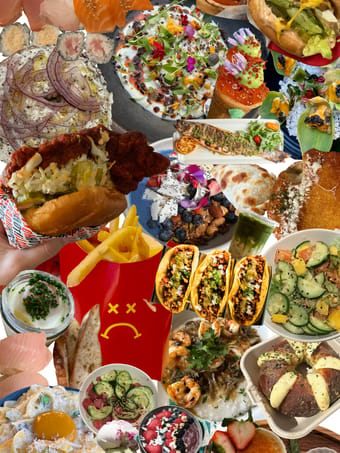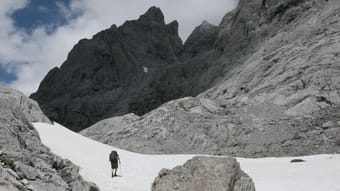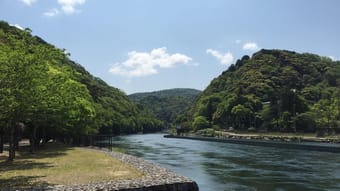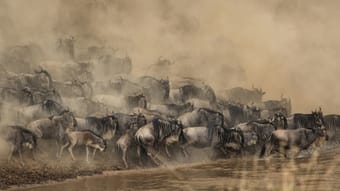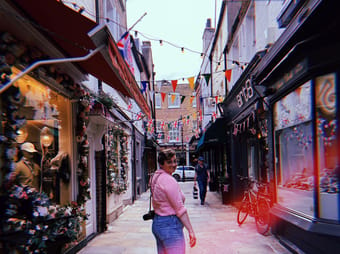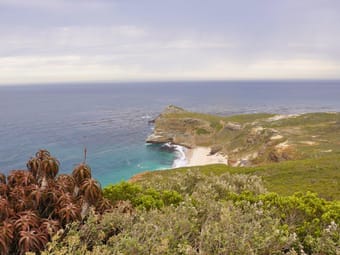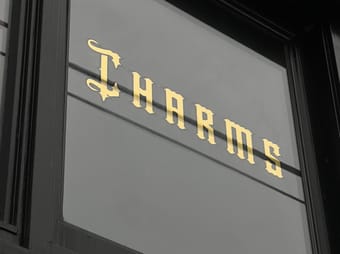Results for Woodland Hills
Seven-day trek based in refugios.
INTRODUCTION
The Picos de Europa is a region of limestone peaks reaching over 2500 metres above sea level; the highest being Torre de Cerredo at 2650 metres. The route described here is one that I hiked alone in early summer. The best time to tackle the route is between June and September. There is more likely to be snow on the high passes in early June but they are usually not to difficult to negotiate.
The Picos de Europa is not as well known as the Pyrenees or Alps and as such the hiker traffic is less and the tourist infrastructure is less developed. This makes the area feel less spoilt but it can also make it a more challenging area to explore with fewer trails and little to no signposting. Always take a map with you: the Editorial Alpina 1:25,000 maps are the best. I took these and also used the outdooractive app and downloaded the relevant map tiles. This is useful for pinpointing where you are, in what can be confusing terrain. I was lucky to have clear weather for my entire trek but I would imagine that it's pretty difficult to navigate when the cloud is down on the mountains so take a compass too.
You can stay in refugios every night on this hike and wild camping is permitted above 1500m; details below.
I can't recommend the Picos de Europa as a hiking destination enough. The mountains are magnificent but there are also beautiful extensive woodlands at lower altitudes, as well as meadows full of wildflowers and butterflies. The juxtaposition between the stark limestone peaks and the gentle greenery of the valleys is beguiling.
DISCLAIMER: Please note that hiking in the Picos de Europa is not risk free. It is a very challenging area in which to hike. I accept no responsibility for any accidents you may experience while hiking this route. You are responsible for your own safety. Some of the dangers and difficulties are listed a little further down this guide.
HOW BUSY?
Unlike some of the more well know hikes around Europe this trail is less well trodden and as such the trail can be quite hard to follow at times, and at other times there is no trail! Despite this, refugios, being small, fill up fast (see below).
REFUGIOS
The hike is made easier if you stay in the staffed refugios where you can recharge your metaphorical batteries. Accommodation at these mountain huts is in communal dormitories and you will need to bring your own sleeping bag. It's best to book ahead as they are often full throughout the summer. Prices are around the €12-17 mark and they also do affordable meals (breakfast, picnic lunch and dinner).
There is also a handful of unstaffed, very basic mountain shelters with no services and no beds but these can be a good option in an emergency. Most of the refugios only accept cash so be sure to take plenty with you before you set off as there are no ATMs! All the refugios on the route are listed in the route description below with website links.
WILD CAMPING
Camping is only permitted at 1500m above sea level or higher. There is not much water anywhere above this altitude so be sure to fill up when you get the chance (at refugios) before camping in a remote spot.
POSADA DE VALDEON
This beautiful village tucked in the valley between the Macizo Central and Macizo Occidental is a lovely place to wander for a few hours. At the centre of the village there are a number of restaurants and bars and a small square with a water fountain. If you need somewhere to stay before or after the trek you'll find hotels, guest houses and a youth hostel. There is a hotel recommendation and link in the route description.
In the centre of the village is a pharmacy should you need any blister plasters! And on the road to the west of the village is the National Park office where you can find information about hiking and anything else to do with the national park.
GETTING THERE
From the UK there are Ryanair flights to Oviedo (Asturias airport) from London Stansted. A bit further afield you can get flights to Bilbao and Santander from the UK and the rest of Europe. Getting from the airport is a little complicated but there are buses to Posada de Valdeón from Oviedo changing in Cangas de Onis. The journey takes about 4.5hrs. There are also buses from Santander and Bilbao changing in Llanes and Riaño with the journey taking around 15hrs from Bilbao.
An easier but more expensive option is to get a taxi. You could also hire a car but of course you will have to leave the car sitting idle in Posada de Valdeón while you do the hike.
FLORA & FAUNA
This area of northern Spain is fantastic for wildlife. At lower elevations the beech and sessile oak woodland stretches for miles over rolling hills. This is part of the boreal forest that once would have covered much of Europe and is home to roe deer, wild boar, red squirrels, pine martens and brown bears.
In the skies you have a good chance of seeing griffon vultures, golden, booted and short-toed eagles, black kites and peregrines. Of the smaller passerine species the Picos are home to red-backed shrikes, black redstarts, spotted flycatchers and black woodpeckers.
But it's the wildflowers in the meadows and on the woodland edges that are the real joy and most easily appreciated. Vetches, cinquefoils and orchids create a colourful patchwork of colours with butterflies bringing the whole scene to life. Look out for swallowtails, fritillaries and hairstreaks.
NAVIGATION
Navigation is difficult as the terrain can be confusing and in many places there is no trail whatsoever. Take a map (1:25K Editiorial Alpina maps are the best), compass and GPS and know how to use them. It's also a good idea to download the map on a relevant map app. I used the outdooractive app but others are available.
WEATHER
Thunderstorms are common, usually in the afternoon and these can be particularly dangerous high up in the mountains. It's best to hike early and get to a refugio by lunchtime if there are afternoon thunderstorms in the forecast. The weather in this part of Spain is very changeable as it has a maritime climate. Rain and thick fog are possible but equally long periods of warm sunshine are not unusual. The best advice I can offer is to be prepared for anything. Pack suncream and a sunhat but don't forget your waterproofs either.
FALLING ROCKS
Rock falls are not unusual as chamois and other hikers can dislodge rocks above you. Getting caught in a rockfall is not so common but not impossible. Be aware and if you see rocks heading your way, and cannot find cover, crouch down on the floor and pull your rucksack over your head and back.
DRINKING WATER
There is very little running water as these mountains are mostly comprised of permeable limestone. You will need to take plenty of water with you each day (I packed three litres every day and usually drank it all). You can fill up at the refugios and there are a few fountains / fuentes although most of the ones I saw marked on the Editorial Alpina map were dry when I found them.
THE SUN
Sunburn and sunstroke are both real dangers and there is little shade. Keep hydrated and wear a sun hat that covers your neck.
TERRAIN
In some places you need to scramble up steep rocky sections. You will need to have experience in this kind of terrain and have a head for heights! The terrain is very rocky and uneven at higher altitudes so you will need strong, sturdy footwear. Trekking poles are also invaluable in providing support and helping you across and up awkward sections. There is also a lot of steep ascent and descent on this route so you will need to be reasonably fit.
DANGEROUS ANIMALS
On many parts of the trail you will encounter cows. In my experience they are very docile and used to trekkers so they shouldn't be of any concern. You may also find flocks of sheep and while these aren't dangerous they are often accompanied by shepherd dogs which have been trained to keep intruders away from the flock. They can be quite intimidating when they start barking at you. If you see sheep ahead it is best to give them a wide berth, even if this means veering away from the trail for a while. If you walk directly towards or through a flock of sheep you risk agitating the shepherd dogs.
Bears are not common in the Picos de Europa but there are bears in other parts of the Cantabrian Mountains, notably Somiedo National Park, not far to the west, and there is always the possibility of seeing an itinerant bear wandering through the Picos. Eurasian brown bears are not as big nor aggressive as the grizzly bears of North America so you shouldn't worry too much about an encounter. It's extremely unlikely you will see one so if you do, consider yourself very lucky.
Wild boar are common in the woodlands at lower altitudes. They are not as aggressive as some people will tell you and tend to be nocturnal. I did see some in the daytime near Vegabaño. As soon as they saw me they ran away, crashing through the undergrowth. As with any large animal it's best to simply give them plenty of space to move away from you.
I hope none of this advice puts you off hiking in the Picos de Europa. Yes, it's a challenging mountain area but the rewards for hiking here are great. Enjoy the hike!
Adventure • Nature • Slow Travel • Sustainable/Eco • Mountain • Camping
$12.00
3
The North Coast 500 is the magical route around the Highlands of Scotland.
This journey begins in Inverness, known as the gateway to the Highlands. We will drive to the West coast of Scotland, with the opportunity to include the Isle of Skye if you have some extra time. Then, we drive clockwise along the coast, taking in waterfalls, lochs, beaches, and the rolling hills of Scotland.
While driving the NC500, you will see the highlights of the route, with many opportunities for hikes, walks along the beach, and castles. As you drive you will be presented with scenic vistas of the rugged Scottish Highlands, whose views are known worldwide and are the real reason this route is so popular. You are encouraged to stop often at scenic points along the way to fully appreciate your surroundings.
This guide will include a full itinerary for an 11 day trip. It can be cut down to 9 days if you remove the Isle of Skye. If you don't do all the activities, you could potentially cut down some more time, but I have tried to limit driving to under 3 hours a day. This guide also includes suggestions on where to stay and where to eat dinner for each night of the trip.
Estimated budget of this trip based on 2 people sharing a room:
Accommodation (usually including a full breakfast) at an average £130 a night = £1,300
Dinner at an average £40 pp = £800
Car rental c. £40 per day = £440
Fuel for c. 830 miles at 148.5p = £1,235
Other (entry prices, parking) = £200
Total = £3,975
The food budget in particular in subject to where you go and what you order. This also doesn't include prices for lunch. Accommodation prices could also be reduced by staying in hostels rather than hotels/ B&Bs. Car rental prices were found on Kayak comparable site - these are variable.
Adventure • Road Trip • Beach • Mountain • Nature
$30.00
2
Spend a day in Uji, just 20 minutes from the centre of Kyoto City. Enjoy a relaxing time in the beautiful nature of the Uji Hills. Visit Unesco World Heritage Sites, a movie location, royal tombs, and a temple hidden away in the woodlands.
Uji, get away from the city and visit the home of The Tale of Genji, matcha, and so much more in this indepth guide to Uji (this guide includes text, images, map, videos, and links to other videos and information form the author (Phillip Jackson - HIDDEN PATHS - Walking Historical Kyoto)).
Backpacker • Couples • Family • Groups • Adventure • Architecture • Art • Budget • History • Outdoors • Overlanding • People & Culture • Photography • Relaxation • Slow Travel • Wellness • Sustainable/Eco
$5.00
1
This budget-friendly itinerary will walk you through visiting one of the most diverse national parks in the country, Olympic National Park. As always, feel free to pick and choose trails from this itinerary to customize it to your needs.
Total trip time: 4 days (but varies with two optional overnight backpacking trips)
Nearest major city: Seattle
Backpacker • Digital Nomads • Couples • Groups • Female Solo • Family • Adventure • Budget • Camping • Outdoors • RV • Overlanding • Road Trip • Slow Travel • Sustainable/Eco • Van Life
Free
2
Singapore, the vibrant city-state in Southeast Asia, is a place where rich history harmoniously intertwines with modern innovation. Iconic landmarks like Marina Bay Sands, with its futuristic design and significance as a symbol of the city, showcase the architectural brilliance that defines Singapore’s skyline.
This travel guide features:
- An introductory note
- Practical information regarding transportation, tourist cards, currency and more
- Must-visit locations, including picturesque viewpoints, museums, cultural venues, and vibrant squares
- A selection of restaurants, cafés, and dessert spots to indulge in
- Ideal photo opportunities to capture the city’s beauty
For more glimpses of my adventures, follow my journey on Instagram (@pedralexpereira) and check out my photography on Flickr (flickr.com/photos/pedralexpereira).
Accessibility • Backpacker • Car-free • Couples • Business • Digital Nomads • Groups • LGBTQ+ • Female Solo • Vegetarian • Vegan • Adventure • Architecture • Art • Boutique • Budget • Coffee • Design • Faith • Foodie • History • Luxury • Outdoors • Overlanding • People & Culture • Photography • Relaxation • Romantic • Shopping • Slow Travel • Sustainable/Eco • Wellness
$5.00
0
This fast-paced 18-day roadtrip takes you through the Scottish lowlands, into the highlands, across Loch Ness into the Isle of Skye, down through Glencoe, into Stirling and back to Edinburgh. You'll see some of Scotland's most iconic locations and stay in some of its most beautiful cities including Edinburgh, Aberdeen, Inverness, Portree, Glencoe, Stirling, Falkirk and much more!
Adventure • History • Road Trip • Architecture • Foodie • People & Culture • Slow Travel • Photography • Mountain • Beach • Relaxation
$25.00
2
I went into 2023 with a huge appetite for travel but very few plans to do so. Little did I know London was on the horizon, and while my annual anniversary trip was much tamer than usual in humble Huntsville AL, I was so glad to do a solo Disney World trip (again), take my girls on the road for the first time to Louisiana, and have lots of Tennessee day trips in between. Enjoy this travel journal of 379 (!!!) places, including:
🖼️ 64 Museums, Gardens, and Attractions
☕️ 53 Coffee Shops
🍽️ 82 Restaurants, Bakeries, Bars, and Food Trucks
🛏️ 29 Hotels, Bed & Breakfasts, and Airbnbs
✨ and a whole bunch more!
Scroll to the bottom for my favorites of the year!
Couples • Family • Architecture • Art • Budget • Coffee • Foodie • History • People & Culture
Free
20
This is a hybrid tourist-local guide of how to spend a day or weekend in Seattle, soaking up all of the iconic sites.
Car-free • Couples • Groups • LGBTQ+ • Digital Nomads • Business • 50+ • Accessibility • Plus Size • Female Solo • Slow Travel • People & Culture • Photography • History • Foodie • Adventure • Boutique • Budget • Coffee
Free
0
Welcome to our Peak District map, your definitive guide to exploring one of England's most breath-taking national parks. Whether you're a seasoned hiker, an avid cyclist, a history enthusiast, or simply someone who loves to uncover hidden gems, this map is designed to help you make the most of your visit.
But that's not all! This is a dynamic guide, continuously updated with new places and deeper insights—all at no additional cost. Your journey keeps evolving!
Questions or feedback? DM us anytime, and be sure to tag us in your Peak District photos for a shared adventure! 📸 @Tootlytravels
📲 And it's more than just a PDF—it's an interactive guide! Click on any location to instantly access directions through your phone's Google Maps app, make restaurant reservations, or book hotels. For even more convenient access, download the free Thatch app.
50+ • Backpacker • Business • Couples • Digital Nomads • Family • Groups • Pets • Female Solo • Adventure • Boutique • Budget • Coffee • Foodie • Luxury • Outdoors • Photography • Road Trip • Slow Travel • Sustainable/Eco
$5.00
1
This guide to Cape Town is the result of my experience as a traveler in the city and dozens of hours of research. It is designed to be all you will need to plan your trip to Cape Town and save you hours and hours of planning and stress.
I have included numerous activities and day trips ranging from natural sites, beaches, museums and historical and cultural sites. I have also included 15+ accomodation and eating out options at different price ranges.
Most importantly, I have included information on how to get around, what to do on arrival, currency, travel safety, visa and entry requirements so you don't have to be too bothered by logistics and the more boring aspects of travel planning.
Because safety is the most common concern for tourists in Cape Town I've paid special attention to this (If you're wondering if it's safe to travel to Cape Town, the short awnser is yes). I've got you covered!
This guide is divided into sections so you can read the entire guide or go to the sections that interest you the most.
It also includes an interactive map and it's mobile friendly so you access all the info on your phone when you download the thatch app, and most importantly, this is a living guide so I will update this at no extra cost to you.
Adventure • Budget • Luxury • History • People & Culture • Road Trip • Beach • Nature
$9.99
3
Have a day or two to spend in the Emerald city? Come to Ballard, the sweetheart of Seattle and my family’s home for nearly fifteen years. One of the oldest neighborhoods and full of Nordic charm, it’s also a dream for a nature lover. In my guide, you’ll find things to do, places to eat and drink and plenty to fill an entire weekend. Let me know if you stop by and tag me your favorite experiences on instagram @jennyvorwaller ✨
Solo Female • Couples • Groups • Art • Nature • Foodie • Shopping • People & Culture
$10.00
1
Ask ThatchGPT
